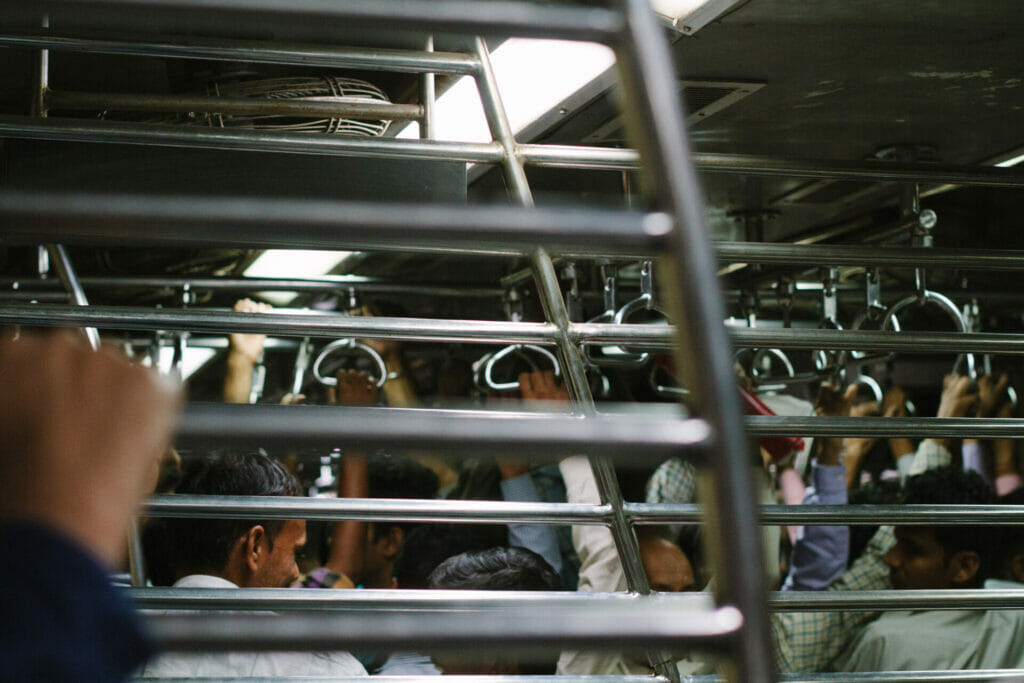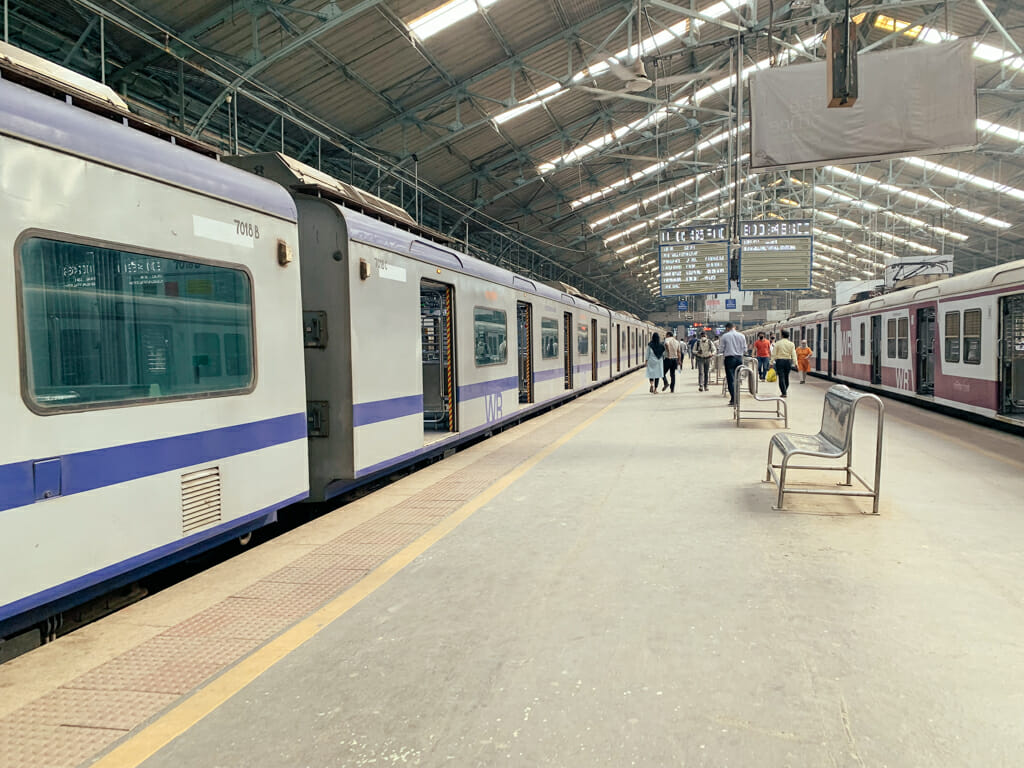As AC trains in Mumbai turn five this Christmas, they have milestones to celebrate. In August, the AC trains on the Western Railway (WR) carried one lakh passengers in a single day for the first time – a feat that is a regular feature now. On October 27th, it celebrated moving one crore people in only the first seven months of the financial year.
AC trains on the Central Railway (CR) started later and had fewer services. It recorded a patronage of Rs 72.32 lakh in the same period. The number of daily passengers boarding the trains has skyrocketed in the past few months, from an average of 6,000 people in February to 50,000 in November.
To put this in context, the AC trains on the WR surpassed the number of passengers it carried in the entire 2020-21 financial year (21 lakh) in the single month of October (22 lakh). If the current level of passengers continues, the jump from the first two years of its running, 2018-19 (47.20 lakh) and 2019-20 (54.73 lakh), will be around 400%!
“We’ve had a great response to the AC trains,” affirms Sumit Thakur, the chief public relations officer (PRO) of the WR. “The ridership has increased and there is great demand for more.”
Mumbai’s suburban locals have been losing their stronghold in the city over the past two decades. From a mode share of 52% in 2005, according to the latest Comprehensive Transport Study of the Mumbai Metropolitan Region (MMR), it dwindled to 43% in 2017. The percentage is likely to be even lower, as commuters have yet to return to pre-pandemic levels.
Can the AC trains turn this tide?

Price drop a great respite for many
The turning point for the AC trains in Mumbai came on May 5th, when the cost of a first-class and AC journey ticket was reduced by half. The AC journey from Churchgate to Vasai and, parallelly, CSMT to Kalyan dropped from Rs 210 to Rs 105.
The cost of a season ticket, or pass, remained the same. “People are loving it,” says Pawan Mulukutla, director of the clean mobility and energy tech program at WRI India. “It’s a respite from the humid weather.”
“There is a lot of pent-up demand for comfort among regular users of public transport,” says Rishi Aggarwal, founder and director of the Mumbai Sustainability Centre.
“People consider certain variables when choosing a mode of transportation for their commute,” says Vishal Ramprasad, senior manager of WRI India’s sustainable cities and transport program. “The train ridership is predominantly cost-sensitive.” Even with the price drop, an AC ticket or pass is around 5 times more expensive (at minimum) than its general counterpart, making the switch unfeasible for many.
But even for those who can shell out the extra cash for comfort, the decision is not so straightforward.

Schedule of AC trains: a crucial factor
“I started taking the 7:54 am AC train a year ago,” says Adarsh Diwe, a Borivali resident who travels to Churchgate for work daily. “It’s very convenient for people working in the stock market. The train reaches Churchgate by 8:50, and I reach the office in 10 minutes, just in time for the opening bell at 9:15.
“We would catch a seat and enjoy the journey. The train was packed, but not overcrowded,” he adds. This was still a step up, as most of his fellow passengers are veteran train users, albeit of the first-class dabba. 20-30%, he contends, have shifted from their cars.
However, Adarsh and his fellow passengers were in for a rude shock beginning in October. The WR announced it was adding 12 non-AC services, 31 AC services, and extending 50, scrambling the local train timetable and with it, the commuters on the 7:54 am train. Instead, they got: a 6:55 am and 8:26 am train starting from Borivali, and a 7:53 am AC train en route from Virar.
Low supply and overcrowding in AC trains
While seemingly the AC train has only shifted by a minute, its departure point from Virar, seven stations away, means that the train arrives at Borivali full to the brim. “Sometimes there are problems shutting the doors,” says Adarsh.
What is now inconvenient for Adarsh may be the perfect conditions for someone else. But as long as the AC trains are a sprinkle between the normal, they will not be in the grasp of everyone within reach.
“Normal trains operate at an efficient frequency of 3 to 3 ½ minutes,” adds Vishal. “But the AC trains are spaced out – sometimes with an hour in between – so you have to time your commute to catch it.”
Along with 1,300 of his co-commuters, Adarsh has signed a letter requesting government and railway officials to reinstate the 7:54 am train. And it appears the train will go their way again, as promises have been. But for now, he boards a first-class bogey in the general 7:47 am train and returns on an AC train.

Operational hiccups
Other operational challenges may further deter people from making the switch to AC trains, especially those transitioning from private vehicles. A 10-15 minute delay, of which complaints have been many, can leave an office worker in a lurch.
Vishal points out that first-class pass holders cannot board AC trains as is, unless they upgrade by paying the difference for the whole month, regardless of the days left before the expiry. But amid such uncertainty, the upfront cost may prove to be a detractor, even for those willing to pay.
Indeed, the numbers tend to agree. After the price drop of journey tickets back in May, the magnitude of AC passes gradually increased month by month. But the number of journey tickets shot up in the same month; from 56,000 in April to almost 2,00,000 in May – a fourfold increase. This points towards a pattern of rather irregular use of the AC trains in Mumbai, of tickets bought last minute when the chance arises, even though a pass is cheaper on the whole.
Read more: Mumbai’s suburban railway cannot carry its population, but there is a solution
Driving climate change
Despite being the cheaper and faster mode of transport, the railways have been losing passengers to private vehicles for decades. The mode share of cars and two-wheelers accelerated from 4% to 8.1%, and 7.8% to 12.5%, between 2005 and 2017 respectively. Car sales show no signs of slowing, with the first six months of 2022 recording a 23% increase compared to the pre-pandemic year of 2019.
This is bad news for a couple of reasons. According to the Mumbai Climate Action Plan (MCAP), transport accounted for 20% of the greenhouse gas (GHG) emissions from Mumbai in 2019. Unsurprisingly, on-road transport was to blame for the bulk – 83% – of it, while the railways only contributed 17%.
Considering the railways are responsible for transporting the largest population in the city, a tip towards private vehicles will hasten Mumbai’s contribution and affliction to climate change.
And if climate change is too far a concern, another urgent and harmful problem is already knocking: air pollution. Vehicular emissions are the largest contributor to Mumbai’s worsening Air Quality Index, over industrial emissions and the use of biofuel, Dr. Gufran Beig, the director of System of Air Quality Weather Forecasting and Research (SAFAR), told Citizen Matters.
The AC trains are a step in the right direction, if only as a magnet – in retaining and attracting – public transport users.
“Mumbai, like other big cities, has always had a culture where even car users take the metro and local trains when it makes sense for them, especially as it removes the stress of driving,” says Pawan. Incidentally, for Adarsh, car travel is out of the question because the journey back is too bogged down with bottlenecks and traffic.
AC trains from Virar are too crowded by the time they reach Borivali. Now Borivali passengers are no more using AC locals. We need more AC trains starting from Borivali in morning and terminating at Borivali in evening
AC trains are not a step in the right direction. They are very harmful for the environment. They make people neglect the problem of climate crisis and urban heat island effect. Air-conditioning can never be a solution to the problem of global or local warming. It is also bad for health.